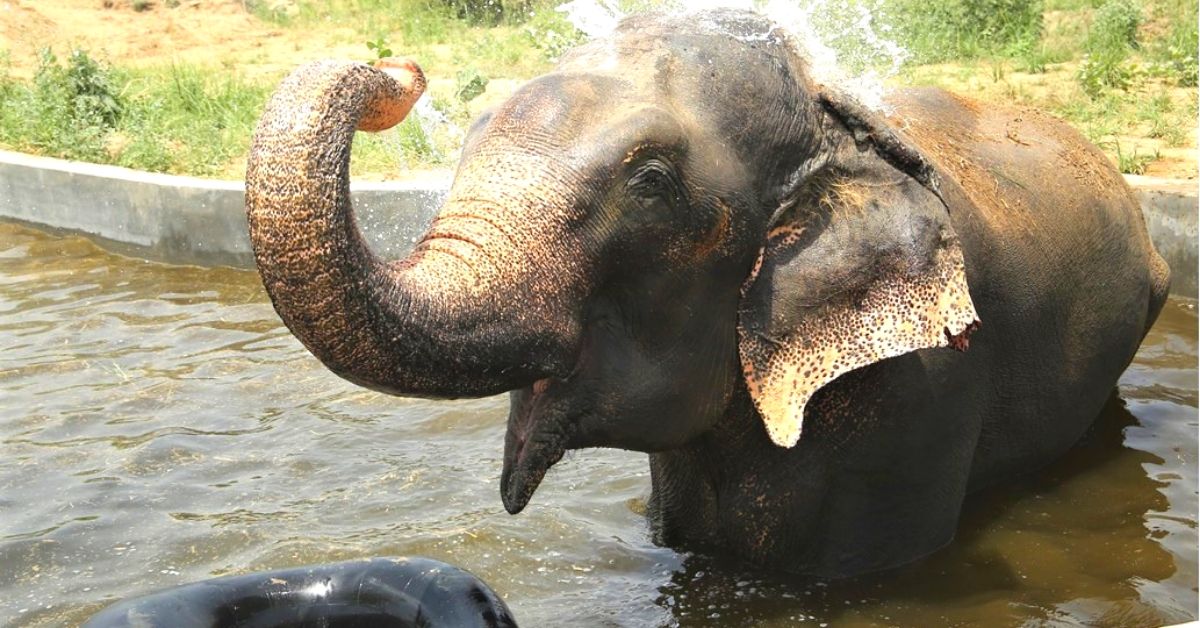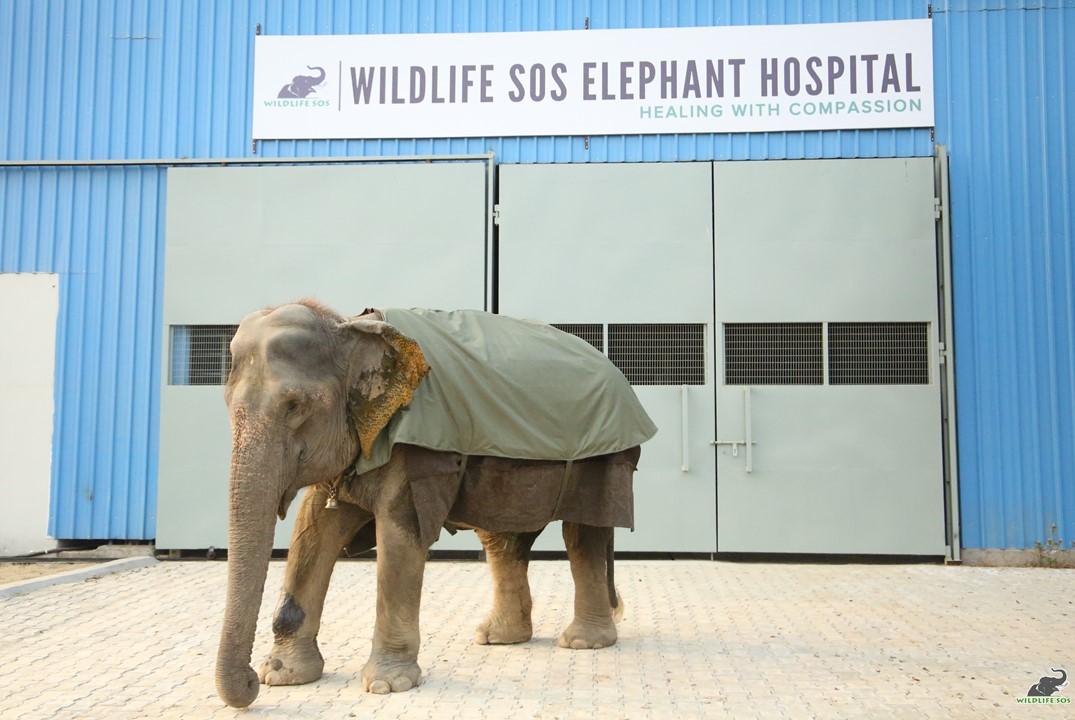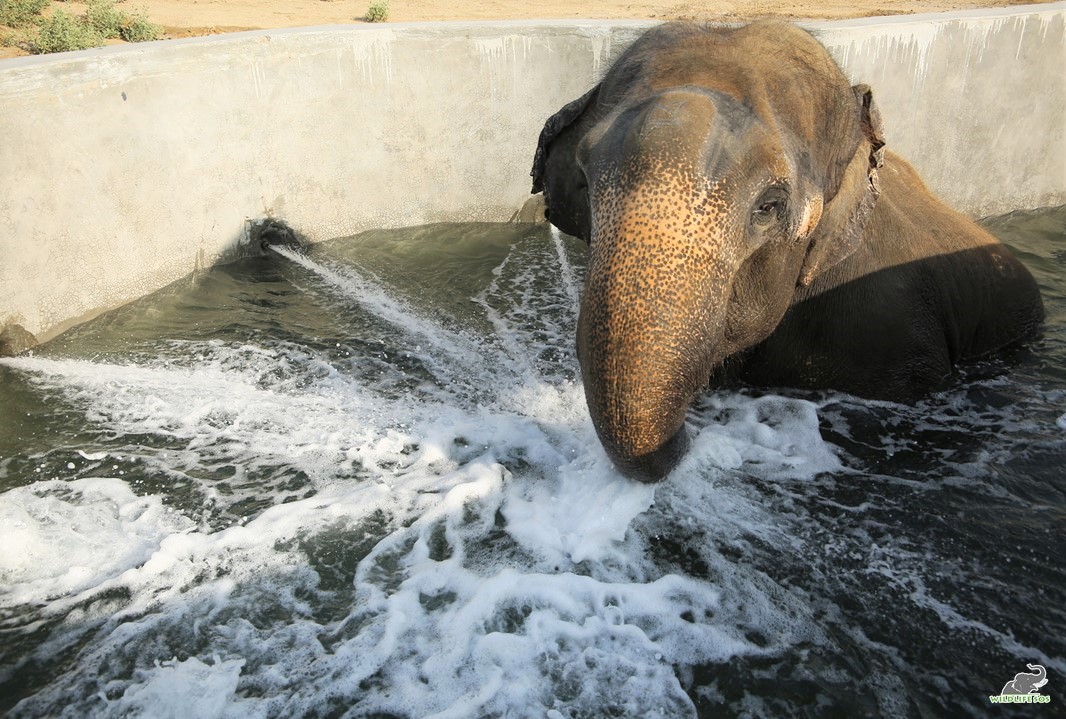Exclusive: Inside India’s First Water Clinic For Elephants on the Banks of Yamuna
What's awesome is that this unique rehab has a 11-foot deep hydrotherapy jumbo pool—equipped with 21 high-pressure jet sprays—that gives a massage to the elephants’ feet and body!

To rescue and rehabilitate elephants from abuse and captivity and provide them with the best medical care, India has opened its first exclusive hospital for elephants in Mathura, Uttar Pradesh.
The hydrotherapy treatment centre was established in November last year, near the banks of the river Yamuna, by the Wildlife SOS’ Elephant Conservation and Care Centre (ECCC) in collaboration with the State Forest Department.
The country’s first hospital is designed to treat injured, sick or geriatric elephants.

Speaking to The Better India, Kartick Satyanarayan, co-founder & CEO Wildlife SOS, says:
This is a huge milestone for elephant protection in India, a hospital that will help us take better care of injured elephants in distress. We hope it will put our country on the map as a scholarly destination for humane management of elephants, and address their protection and conservation.
So far, six elephants have been admitted to the hospital and are undergoing treatment to heal their physical and mental wounds. There are four veterinarians and a dedicated team of trained care staff who cater to the gentle beasts round the clock.
While we cannot change the past, a dedicated hospital will support the Wildlife SOS team in their work of healing wounds and giving the majestic beasts the quality of life that they deserve, says Geeta Seshamani, co-founder & Secretary Wildlife SOS.
The hospital is equipped to test and diagnose elephants for a host of diseases and pathogens with an inbuilt path lab.
It can also deal with emergencies with a hoist and support structure and can quarantine the patient for the required duration to avoid the spread of diseases.

Regular veterinary check-ups take place through the weighing scale and treatment pen. The hospital design accounts for space for the veterinary team to store medicine and critical equipment, including portable x-rays, ultrasound machines, foot care tools as well as a room for staff to stay in overnight for observation and to keep an eye on the animal.
It also has a 11-foot deep hydrotherapy jumbo pool equipped with 21 high pressure jet sprays that gives a massage to the elephants’ feet and body. This, in turn, helps in increasing blood circulation.
Speaking about the problems associated with the rescued animals, Dr Yaduraj Khadpekar, Senior Wildlife Veterinary Officer, says:
We have been rescuing elephants from circuses, temples, and so on. A common health issue between them is Osteoarthritis, joint pains, foot issues and oedema. Because they are made to walk for hours on unnatural surfaces (tar roads) against their will, they develop prolonged foot problems.
Dr Khadpekar strongly believes that we need more awareness in terms of managing the distressed elephants.
“There are very few courses which offer elephant anatomy, and most regular veterinarians do not know how to treat them. We need more such separate facilities. Hopefully, our health centre becomes a model that can be taken across India. We also need to establish a provision wherein the elephants get regular vaccinations and health checkups,” he says.
Why India Needs More Rehabilitation Centres For Elephants

Dressed in vibrant and colourful attires, this majestic wild animal is often found parading up and down like a model during festivals and cultural programmes. The tug-of-war and beauty contests between elephants are considered a sight to behold.
While people from India but from all over the world appreciate the sight of elephants walking in processions, they fail to realise the trauma and cruelty that these beings face daily.
A country which was once known for having lakhs of elephants now has merely 26,000. Of these, around 3,500 are kept in captivity for multiple reasons, which include weddings, campaign processions or tourist entertainment.
During an inspection at the College of Veterinary and Animal Sciences in Mannuthy, experts from PETA India, Animal Rahat, Wildlife SOS, and the Centre for Studies on Elephants, found that elephants are often chained with spiked hobbles and housed on hard floors.
Handlers even pierce their ears and drill holes into their tusks, maiming them for life.

“My only appeal to people is to think about how the wild animal ended in our concrete jungles. If you see an elephant walking in the market, circus or temple, it is safe to assume that it has been through trauma. Do not encourage such practices. Using elephants for entertainment purposes is a big no,” says Dr Khadpekar.
Elephants are known to be wise and highly social animals who have close bonds with their families and adore their children. During troubled times, they work in unison. Capturing such majestic creatures is the most inhuman act, and as a country, we must end this cruelty.
Also Read: Abused for Years, Now Rescued: This Temple Elephant’s Story Will Move You to Tears
(Edited by Shruti Singhal)
Images Courtesy: Wildlife SOS
Like this story? Or have something to share?
Write to us: [email protected]
Connect with us on Facebook and Twitter.
If you found our stories insightful, informative, or even just enjoyable, we invite you to consider making a voluntary payment to support the work we do at The Better India. Your contribution helps us continue producing quality content that educates, inspires, and drives positive change.
Choose one of the payment options below for your contribution-
By paying for the stories you value, you directly contribute to sustaining our efforts focused on making a difference in the world. Together, let’s ensure that impactful stories continue to be told and shared, enriching lives and communities alike.
Thank you for your support. Here are some frequently asked questions you might find helpful to know why you are contributing?


This story made me
-
97
-
121
-
89
-
167











